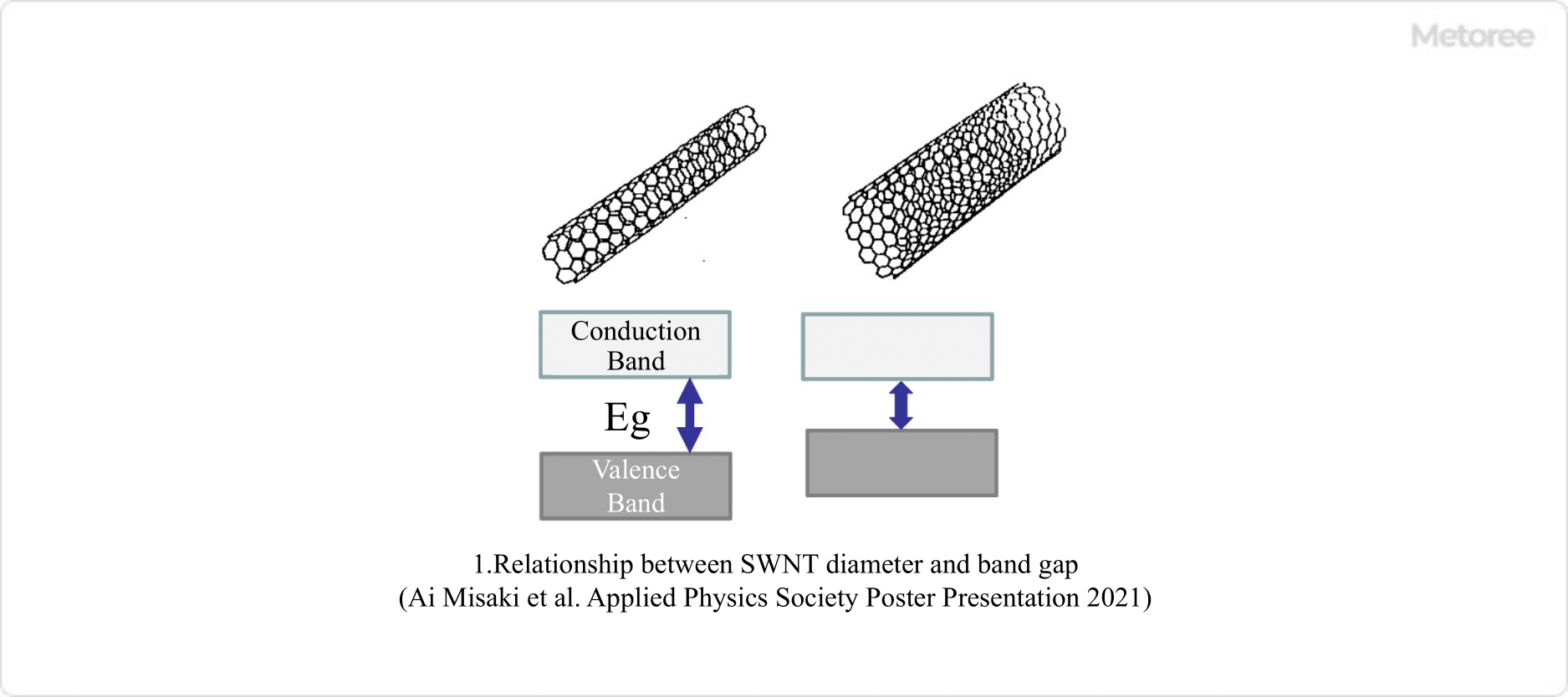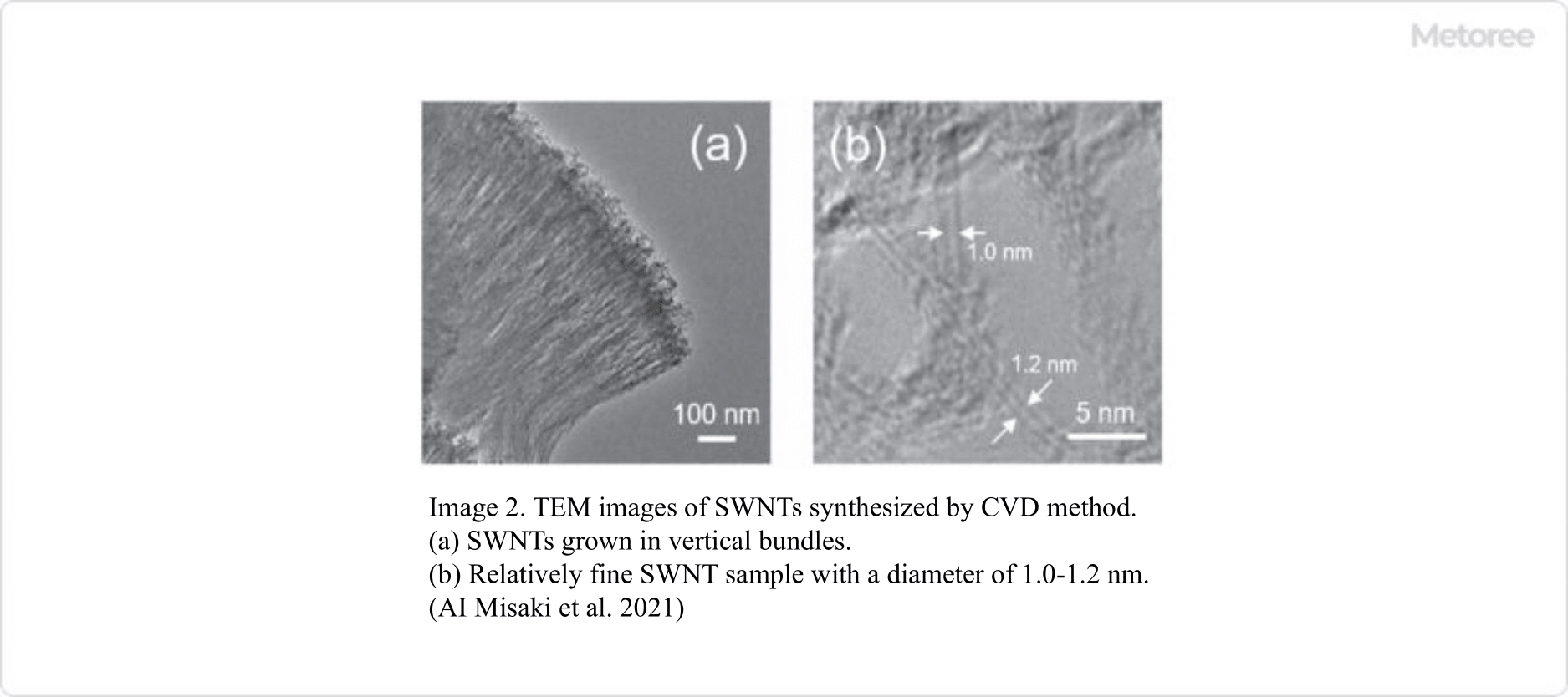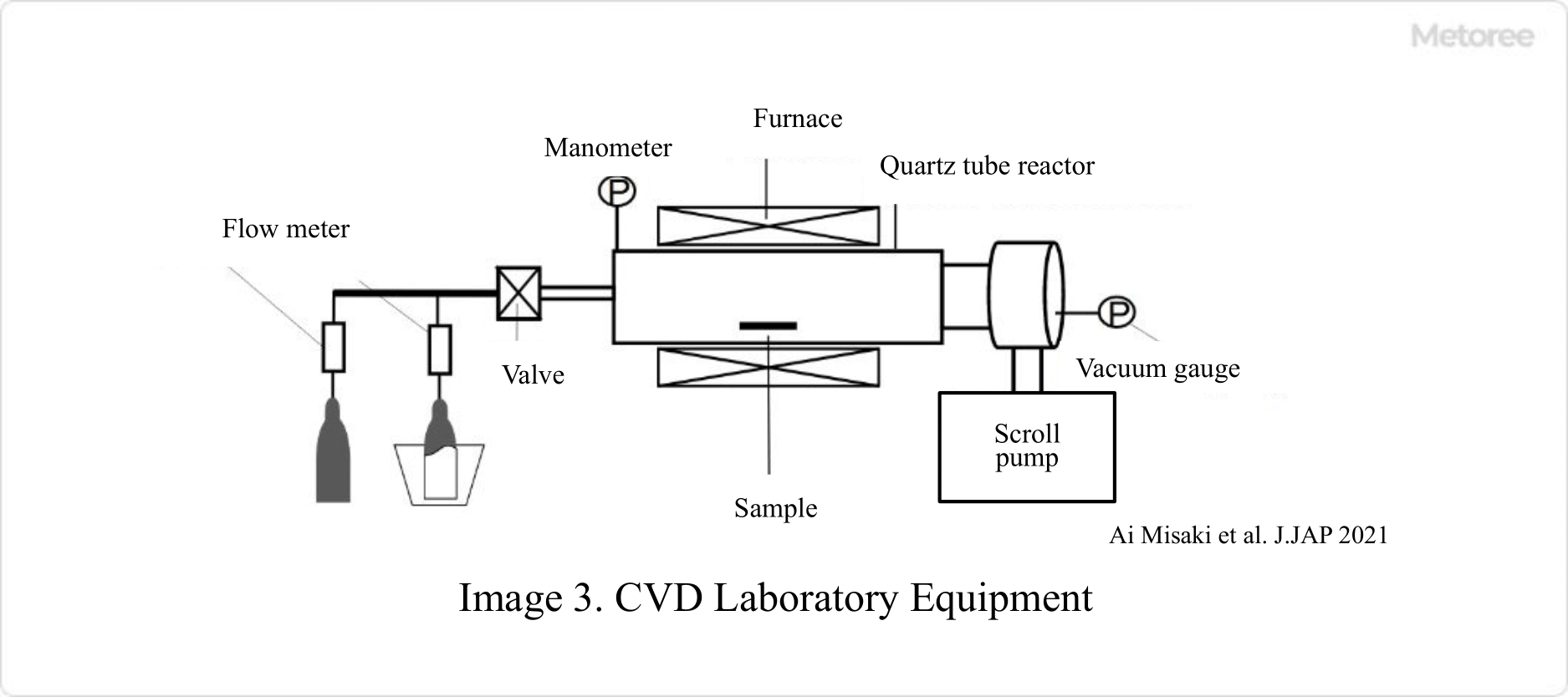











13 Nanotube Manufacturers in 2024
This section provides an overview for nanotubes as well as their applications and principles. Also, please take a look at the list of 13 nanotube manufacturers and their company rankings. Here are the top-ranked nanotube companies as of April, 2024: 1.Alfa Chemistry, 2.NoPo Nanotechnologies India Private Limited, 3.US Research Nanomaterials, Inc..
Table of Contents
2016: Received his Ph.D. in Engineering from the Nagoya University Graduate School of Thermal Management Laboratory for research on hydrated heat storage.
2016~2020: Part-time lecturer at Meijo University and researcher at Nanomaterials Center.
2021~2022: Worked at Sophia University PJPD, and he is currently a registered researcher at the University of Tokyo Hospital.
https://researchmap.jp/tbhC95lYNrMI6JD0
https://www.linkedin.com/in/%E4%BA%9C%E8%A1%A3-%E4%B8%89%E5%B4%8E-069726245/
What is a Nanotube?
A nanotube is a microscopic material characterized by its tubular structure.
They are called nanotubes because their size is on the nanometer scale. In general, it refers to carbon nanotubes, which are composed of carbon.
A carbon nanotube consists of a cylindrically rounded sheet of benzene rings that are laid without gaps between them. It is possible to insert even thinner tubes in this cylinder, single-walled nanotubes (SWNTs) for one layer, and multi-walled nanotubes (MWNT: multi-walled carbon nanotube).
Uses of Nanotubes
Carbon nanotubes are frequently utilized in nanotechnology. Due to their high conductivity and aspect ratio, they can form networks of conductive tubes.
Their strong chemical bonding also allows them to increase mechanical strength when used with polymers, making them very good heat conductive materials. Taking advantage of its electronic and mechanical properties, it is expected to be used in a wide range of fields as a fundamental material for nanotechnology. Examples of products in which nanotubes have already been applied include tennis rackets, bicycle frames, speakers, headphones, and electric wires.
Principle of Nanotubes
Carbon nanotubes are chemically stable and extremely light, with a density about half that of aluminum. Nevertheless, they are 20 times stronger than steel, 1,000 times more current density resistant than copper, and have higher thermal conductivity than copper.
1. Single-Walled Carbon Nanotubes (SWNTs)

Single-walled carbon nanotubes (SWNTs) comprise seamless cylindrical materials formed from a single layer of graphene. The electrical conductivity of SWNTs shows metallic or semiconducting behavior as the bandgap changes depending on the winding method and diameter of the graphene sheet that forms the tube.
2. Double-Walled Carbon Nanotubes (DWNTs)

DWNTs (double-walled carbon nanotubes) have a band gap suitable for field-effect transistors. However, their electrical behavior is very complex, limiting their use to fields such as thin-film electronics. In addition, selective functionalization of the outer layer enables the application of contrast agents and therapeutic agents in biological systems.
3. Multi-Walled Carbon Nanotubes (MWNTs)
Multi-walled carbon nanotubes (MWNTs) are easier to mass-produce and less expensive per unit than their single-walled counterparts (SWNTs). While functionalization usually results in the cleavage of carbon double bonds and changes in properties, multi-walled carbon nanotubes can retain their original properties because only the outer layers are modified.
To introduce new properties for specific applications, it is necessary to modify the surface of carbon nanotubes to make them soluble in various solvents, enhance their functionality, give them dispersibility, compatibility, and so on. This is possible by causing an oxidation reaction using acid, ozone, plasma, etc. For example, when a hydroxyl group or a carboxyl group is generated, polarity is created, solubility can be obtained and affinity with various polymers can be increased.
Other Information on Nanotubes
1. Practical Application of Nanotubes
Nanotubes can be synthesized by laser ablation, arc discharge, and chemical vapor deposition (CVD). Among these approaches, the CVD method is the most feasible for industrial mass production.

The super growth method is an extremely innovative synthesis method in which an extremely small amount of water (on the order of ppm) is added to the synthesis atmosphere of the CVD method, resulting in a catalyst lifetime of tens of minutes instead of the usual several seconds. SWCNTs can be synthesized from very small amounts of catalyst.
Specifically compared to conventional CNTs, CNTs obtained by the super growth method are characterized by high aspect ratio, high purity, and large surface area, and are expected to be applied to new functional materials with new functions and features. Specifically, it is expected to be applied to innovative materials such as high-performance rubber materials and high thermal conductivity materials, and demand for these materials is expected to grow.
2. Disadvantages of Nanotubes
Carbon nanotubes have been pointed out to have carcinogenic and other risks when inhaled by the human body.
Another issue is that carbon nanotubes are more expensive than other materials. It is hoped that the establishment of mass production technology will lead to lower prices in the future.
List of 13 Nanotube Manufacturers
*Including some distributors, etc.
Sort by Features
- Default
- Company Size: largest first
- Year Founded: oldest first
- Year Founded: earliest first
Sort by Area
- United States of America
- Belgium
- Canada
- India
- Luxembourg
-
-

-
Alfa Chemistry
Carbon Nanotubes
Manufacturer Overview
Alfa Chemistry, founded in the year 2015 is based in New York, USA as a biotechnology company and manufacturer of graphene materials. Their product portfolio includes graphene oxide, CVD graphene film, graphene modification services, graphene series, graphene-like material, carbon nanomaterials, quantum dots, upcoming nanoparticles, and graphene transfer services. The company also provides services in custom manufacturing, and graphene analysis with quality assurance. The products are used in various industries which include energy, digital electronics, environment, textile, coating, and biomedical science.
-
-
-
-

-
American Elements
Nanotubes
Manufacturer Overview
American Elements was founded in 1997 in California and currently has research and production facilities in Utah, Mexico, China, and the United Kingdom. AE manufactures and distributes advanced materials from a catalog of over 30,000 products for bulk industrial use as well as small scale laboratory use. AE also provides testing and analyses services including spectroscopy along with structural, thermal, and electrical analyses. AE holds sustainable development as a core corporate value and is committed to work to protect the health of the environment.
-
-
-
-

-
US Research Nanomaterials, Inc.
Nanotubes
Manufacturer Overview
US Research Nanomaterials Inc, headquartered in Houston, Texas, is a manufacturer and supplier of nanomaterials. Their diverse product portfolio includes graphene, metal nanoparticles, carbon nanotubes, quantum dots, and more. These nanomaterials find applications in industries such as electronics, energy, healthcare, and aerospace. Their products enable advancements in areas like flexible electronics, energy storage, drug delivery systems, and sensor technology. Their nanomaterials offer enhanced properties at the nanoscale, revolutionizing industries and driving innovation in various industrial applications.
-
-
-
-

-
Nano-C
Carbon Nanotubes
Manufacturer Overview
Nano-C, established in 2001 and headquartered in Westwood, Massachusetts, is a chemical manufacturer specializing in the development of nanostructured carbons tailored for energy and electronics applications. The company's product portfolio includes fullerenes, single-walled nanotubes (SWCNT), fullerene derivatives, and carbon nanotubes. These nanostructured carbons find applications in a diverse array of industries, including semiconductor manufacturing, renewable energy, water purification, medical devices, and more. The company partners with ASCA Intensify Cooperation to enhance organic photovoltaic (OPV) solutions and collaborates with Nantero to develop high-density, DRAM-class memory applications.
-
-
-
-

-
Nanocyl SA
Carbon Nanotubes
Manufacturer Overview
Nanocyl SA, founded in 2002, is a manufacturer based in Sambreville, Belgium, producing industrial multiwall carbon nanotubes (MWCNTs). The company's featured MWCNT products include masterbatches made from high-density polyethylene (HDPE), polyvinyl chloride (PVC), thermoplastic polyurethane, and other materials. It also provides solvent-borne and waterborne dispersions, as well as epoxy resin concentrates designed for electrical performance and high mechanical performance. It further offers custom carbon nanotube (CNT) masterbatches, compounds, and liquid dispersions. With an annual production capacity of 460 metric tons, the company serves international markets, including customers in Europe, South Korea, and China.
-
-
-
-

-
NoPo Nanotechnologies India Private Limited
HiPCO® CARBON NANOTUBE
Manufacturer Overview
NoPo Nanotechnologies, established in 2011 and headquartered in Bangalore, India, is a manufacturer specializing in small-diameter single-walled carbon nanotubes (SWCNT). The company produces small diameter 0.8-1 nm nanotubes at scale. Its product line comprises various types of SWCNT, including raw SW CNT, semiconducting SW CNT, single chiral SW CNT, metallic SW CNT, and carbonyl/nickel detectors, showcasing its expertise in nanotechnology. The company caters to a range of industries, including electronics, semiconductors, EV batteries, medical applications, filtration, and various others.
-
-
-
-

-
MilliporeSigma
Nanoparticle
Manufacturer Overview
Millipore Sigma, formerly known as Sigma-Aldrich, was created in 175 through the merger of Sigma Chemical Company and Aldrich Chemical company and today is a subsidiary of Merck. Millipore Sigma is a life science and biotechnology company serving the industry with several products and services. Some of their product categories include peptide synthesis materials, biochemicals, building blocks, catalysts, chemical biology, chemical synthesis, flavors & fragrances, formulation, lab chemicals, lab safety, APIs, and stable isotopes. Services include characterization, contract manufacturing, custom products, software, support, testing, and mRNA development & manufacturing.
-
-
-
-

-
Nano Research Elements Inc.
Carbon Nanotubes
Manufacturer Overview
Nano Research Elements Inc., founded in, Haryana, India is a manufacturer of nanomaterials that navigate the Periodic Table including gold, silver, and iron oxide. The company's product portfolio includes nanowires, nanopowders and nanoparticle dispersions, magnetic nanopowders, nanoparticles and quantum dots. Their products are used in industries such as Food and Beverage, Pharmaceutical and Biotechnology, Chemical and Petrochemical, Environmental Testing and electronics. The company also offers services such as R&D services, customer support and custom projects.
-
-
-
-

-
OCSiAl
Graphene nanotubes
Company Overview
OCSiAl, established in 2009 and headquartered in Leudelange, Luxembourg, is a manufacturer and a supplier of a large number of graphene nanotubes The company crafts the first graphene nanotubes available for mass application under the brand TUBALL. The distinguishing properties of graphene nanotubes are they are compatible with many materials, have thermal stability in vacuum of up to 1600o C, and are 100 times stronger than steel. When distributed in the matrix of a material, graphene nanotubes form a three-dimensional reinforcing and conductive network that enables new properties to be achieved.
-
-
-
-
-
Kusumoto Chemicals, Ltd.
Single Wall Carbon Nanotubes
-
-
-
-

-
Otto Chemie Pvt. Ltd
Nanotubes
Distributor Overview
Founded in Mumbai, India in 2006, Otto Chemie Pvt. Ltd. is an ISO 9001:2015 & GMP certified chemical manufacturing company and distributor. Otto Chemie serves customers in many industries including agriculture and food processing, pharmaceuticals, oil & gas, cement, as well as educational and R&D industries. Product offerings include antibiotics, amino acids, vitamins, detergents, ionic liquids, materials science compounds, labware, oil, metal & ceramic science compounds and tools, oils, reagents, solvents.
-
-
-
-

-
NanoIntegris Technologies, Inc.
Semiconducting SWNTs (IsoNanotubes-S)
Distributor Overview
NanoIntegris Technologies, Inc., established in 2007 and headquartered in Boisbriand, Quebec, is a supplier specializing in electronically pure semiconducting and metallic single-walled carbon nanotubes. The company offers a comprehensive product portfolio, which includes IsoNanotubes, HiPco carbon nanotubes, graphene nanoplatelets, transparent conductive ink, and Boron nitride nanotubes. These advanced nanotubes find applications across a range of industries, serving as essential components in field-effect transistors, drug delivery and detection systems, organic light-emitting diodes, transparent conductive films, and high-frequency devices.
-
-
-
-

-
Cheap Tubes
Industrial Carbon Nanotubes Products
Distributor Overview
Cheap Tubes is a supplier of graphene nanomaterials and carbon nanotubes for the industrial sector incorporated in 2005 and located in Grafton, Vermont, USA. The company offers carbon nanotubes in various grades for research and development applications, and multi-walled carbon nanotubes (MWCNTs) for wafer processing fabrication in RFI shielding materials. It also offers chemical vapor deposition (CVD) graphene films for diagnostic devices and microbial detection. The company’s products are mainly used in North America’s research, educational, and laboratory institutions.
-
-
Nanotube Manufacturer Ranking
*Including some distributors, etc.Ranking as of April 2024
Derivation Method| Rank | Company | Click Share |
|---|---|---|
| 1 | Alfa Chemistry |
18.8%
|
| 2 | NoPo Nanotechnologies India Private Limited |
15.6%
|
| 3 | US Research Nanomaterials, Inc. |
11.8%
|
| 4 | Nano-C |
10.8%
|
| 5 | Cheap Tubes |
7.5%
|
| 6 | Nanocyl SA |
7.5%
|
| 7 | American Elements |
6.5%
|
| 8 | MilliporeSigma |
5.9%
|
| 9 | NanoIntegris Technologies, Inc. |
5.4%
|
| 10 | Nano Research Elements Inc. |
4.3%
|
Derivation Method
The ranking is calculated based on the click share within the nanotube page as of April 2024. Click share is defined as the total number of clicks for all companies during the period divided by the number of clicks for each company.Number of Employees
Newly Established Company
- NoPo Nanotechnologies India Private Limited: 2011 (13 years ago)
- NanoIntegris Technologies, Inc.: 2007 (17 years ago)
- Nanocyl SA: 2002 (22 years ago)
Company with a History
- Nanocyl SA: 2002 (22 years ago)
- NanoIntegris Technologies, Inc.: 2007 (17 years ago)
- NoPo Nanotechnologies India Private Limited: 2011 (13 years ago)
Nanotube Manufacturers in United States
*Including some distributors, etc.
Global Distribution of Nanotube Manufacturers by Country
*Including some distributors, etc.
| Country | Number of Companies | Share (%) |
|---|---|---|
 United States of America
United States of America
|
4 | 44.4% |
 India
India
|
2 | 22.2% |
 Belgium
Belgium
|
1 | 11.1% |
| Luxembourg | 1 | 11.1% |
 Canada
Canada
|
1 | 11.1% |
